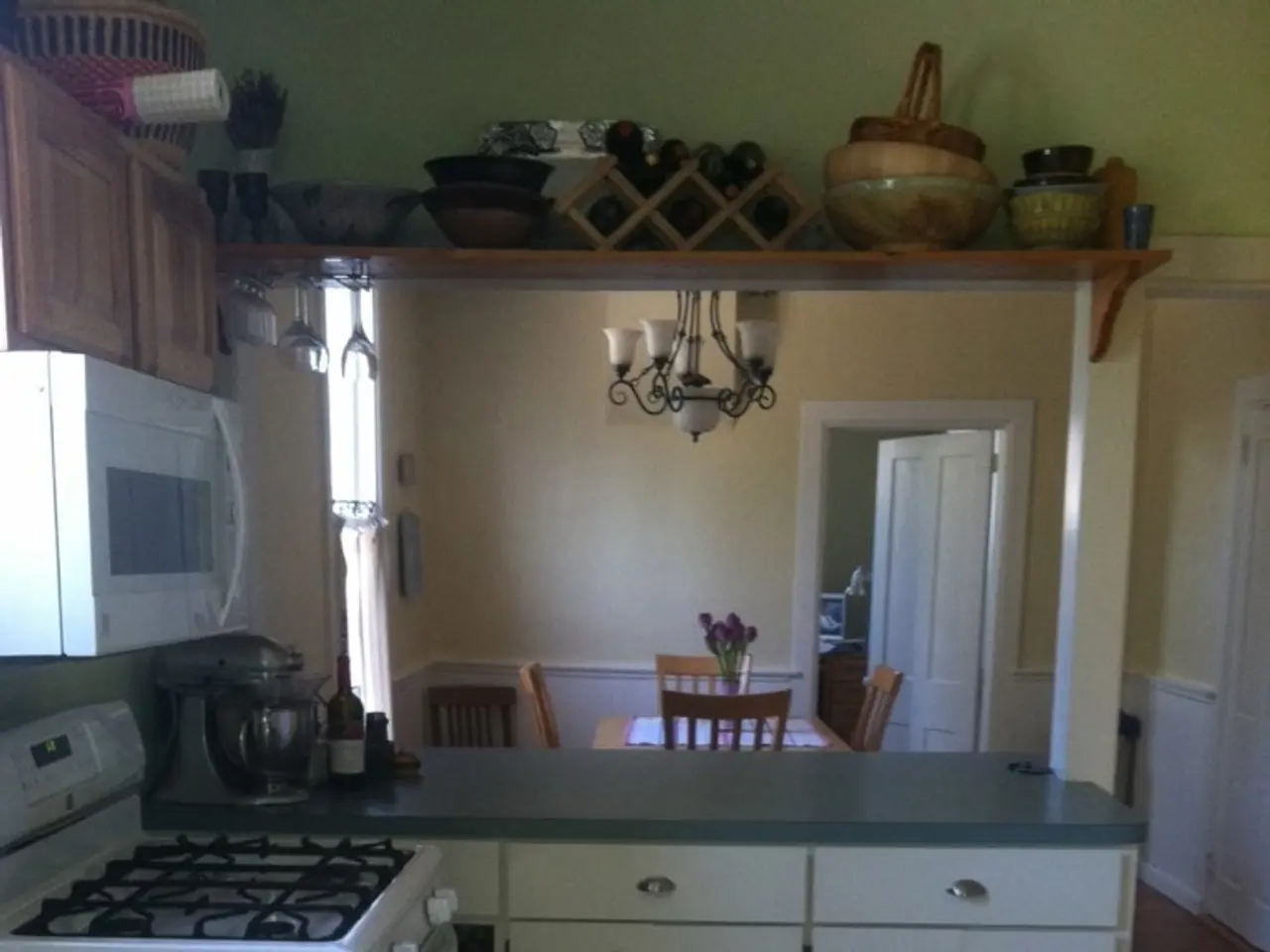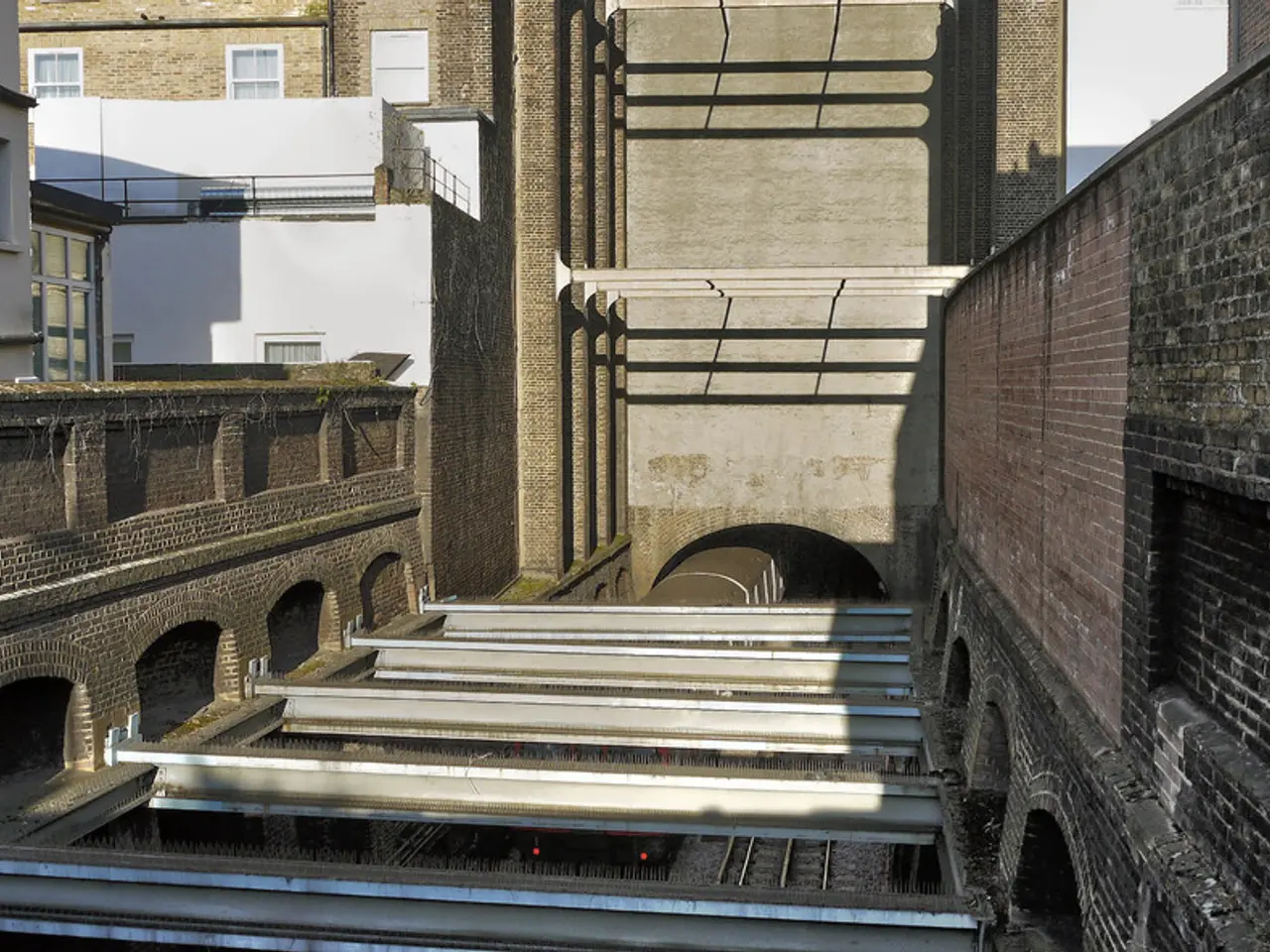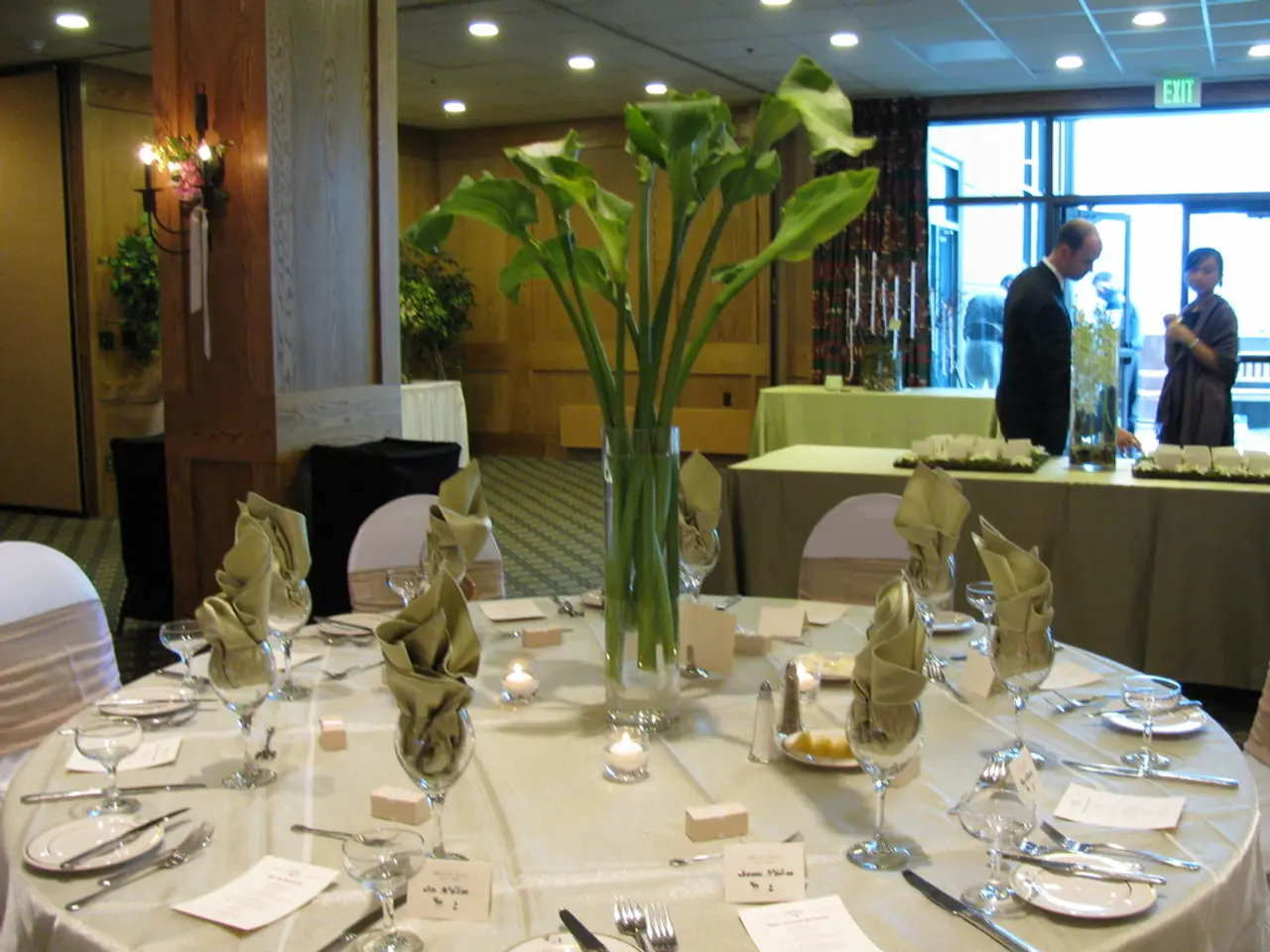Exploring the idea of open shelving for a more spacious and modern ambiance
In the realm of kitchen renovations, replacing traditional upper cabinets with floating wood shelves has become a popular trend. This design choice offers numerous benefits, including creating a more open, airy feel that can make smaller kitchens appear larger and more modern.
Floating shelves provide easy access to everyday items, showcase attractive dishware or decor, and add a stylish, minimalist aesthetic without the visual bulk of cabinets. They also enable space optimization by maximizing vertical wall space and keeping floors clear, which is useful in smaller areas.
From a design and practical standpoint, some key solutions for successfully using floating wood shelves include:
- Secure Installation: Anchoring shelves firmly into wall studs is critical, especially to hold heavier kitchenware like plates. Using strong floating shelf brackets ensures stability and weight capacity while maintaining the clean "floating" look.
- Proper Spacing: Keeping 15–20 inches between shelves accommodates most kitchen items and helps balance function with appearance.
- Balance with Closed Storage: Mixing open floating shelves with some closed cabinets helps maintain sufficient storage for items better hidden from dust or out of reach of kids, while letting you display curated pieces on shelves.
- Aesthetic Enhancements: Patch and paint the wall behind the removed cabinets for a clean finish. This is also an opportunity to add a backsplash or accent color to create a striking focal point. Installing slim LED strip lighting under the shelves can highlight displayed items and add ambiance.
- DIY Friendly and Cost Effective: Floating shelves generally require less material and labor than full cabinets, making them a popular and affordable DIY upgrade option. Utilizing big-box store cutting services ensures perfect shelf lengths.
It's essential to note that open shelving is not right for every kitchen. It shines when paired with smart planning and honest self-assessment. For those who thrive with open shelving, editing possessions and appreciating visible organization can lead to a tidier, more efficient kitchen.
Moreover, open shelving is generally less expensive than traditional cabinetry. Proper stud anchoring matters more than bracket style in open shelving. Iron pipe brackets are more cost-effective than pricier "designer" options.
Lastly, open shelving solutions let kitchens breathe while showcasing personality. Weekly wipe-downs of open shelves take 10 minutes, ensuring they remain clean and attractive. In small kitchens, floating shelves kept sightlines clear, avoiding the "boxed-in" feeling.
Working with architects early proved crucial in open shelving projects, as they can help plan the layout and ensure that the shelves are functional and aesthetically pleasing. Mixing materials (like marble slabs on metal frames) prevents visual monotony in open shelving, while sticking to a cohesive color palette helps achieve a polished look.
In some cases, the cost difference between open shelving and cabinetry was nearly 40%. Buyers really do pay extra for that "curated chef" look with open shelving. Sealing raw wood with food-safe beeswax blends is a practical tip for open shelving, as it prevents stains and preserves the wood.
In rental kitchens, removable brackets can be used instead of permanent ones, making open shelving a versatile solution for various living situations. Wood and metal shelves hide fingerprints better than glass shelves, making them a practical choice for busy kitchens. Shelves 18 inches above the range are far enough from splatters to remain clean.
In conclusion, replacing traditional upper cabinets with floating wood shelves enhances kitchen openness, showcases personal style, and optimizes storage space when designed with secure mounting, thoughtful spacing, and a strategic balance of open and closed storage. This approach supports both aesthetic appeal and functional kitchen organization.
- Floating wood shelves, a popular trend in kitchen renovations, create a more open and airy feel, making smaller kitchens appear larger and more modern.
- Secure installation of floating shelves is critical, especially for holding heavier kitchenware, and can be achieved using strong floating shelf brackets.
- Proper spacing between shelves (15-20 inches) accommodates most kitchen items and helps balance function with appearance.
- Mixing open floating shelves with some closed cabinets helps maintain sufficient storage and lets you display curated pieces on shelves, creating a clean finish.
- Aesthetic enhancements like painting the wall behind removed cabinets, adding a backsplash, or installing slim LED strip lighting can create a striking focal point.
- Removable brackets can be used in rental kitchens, making open shelving a versatile solution for various living situations.
- Open shelving solutions showcase personality, are generally less expensive than traditional cabinetry, and require less material and labor for DIY upgrades.




